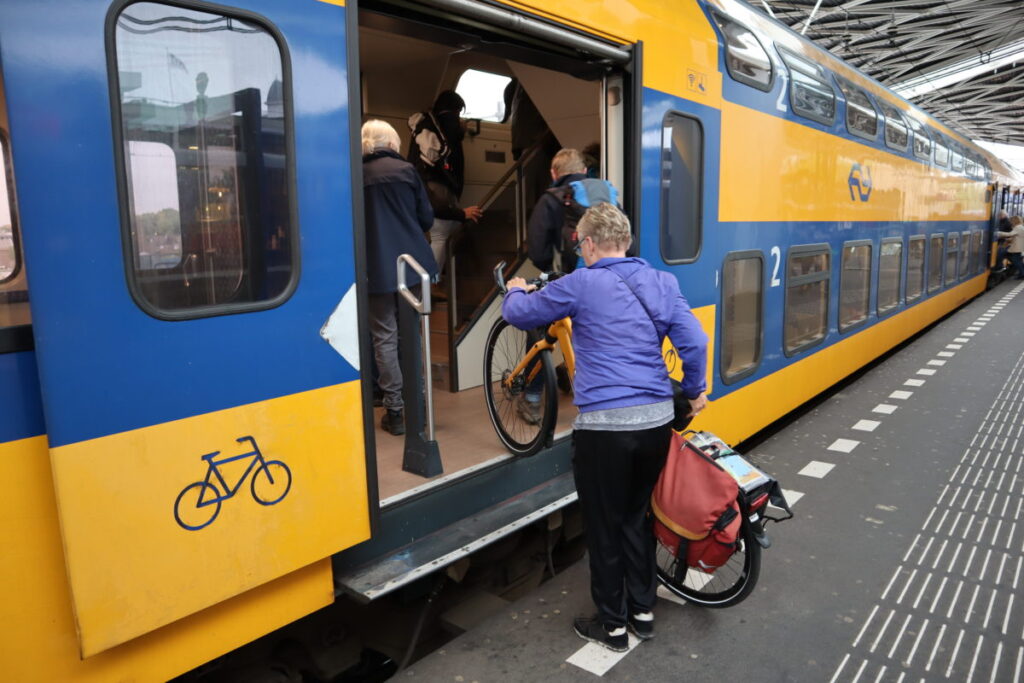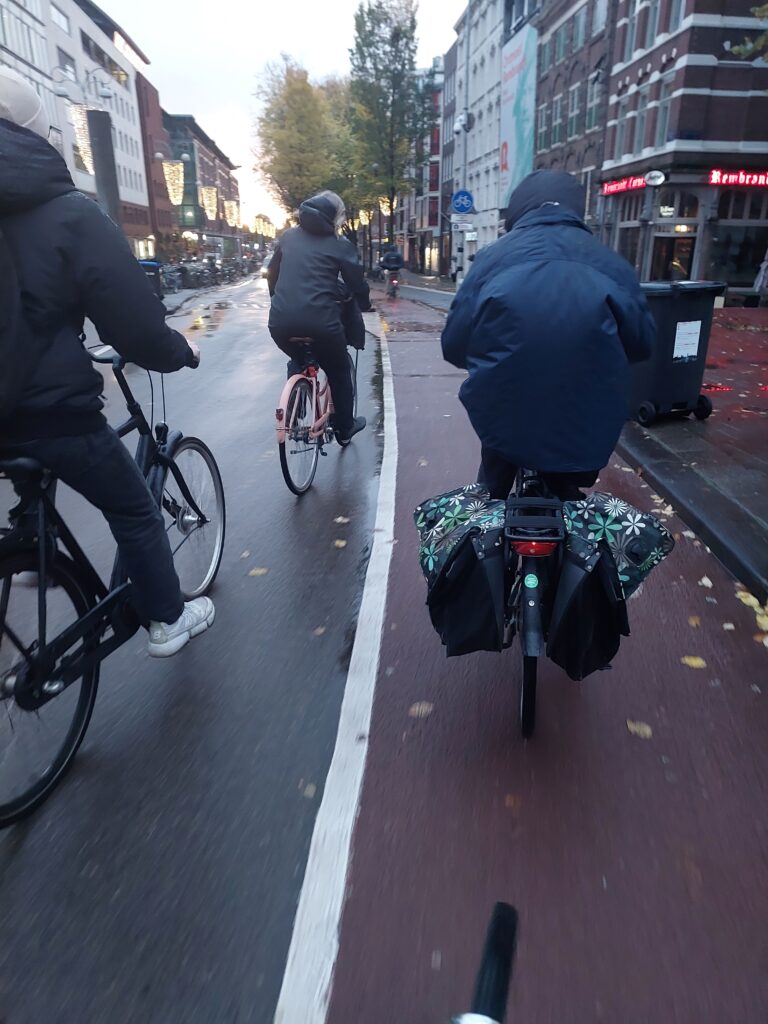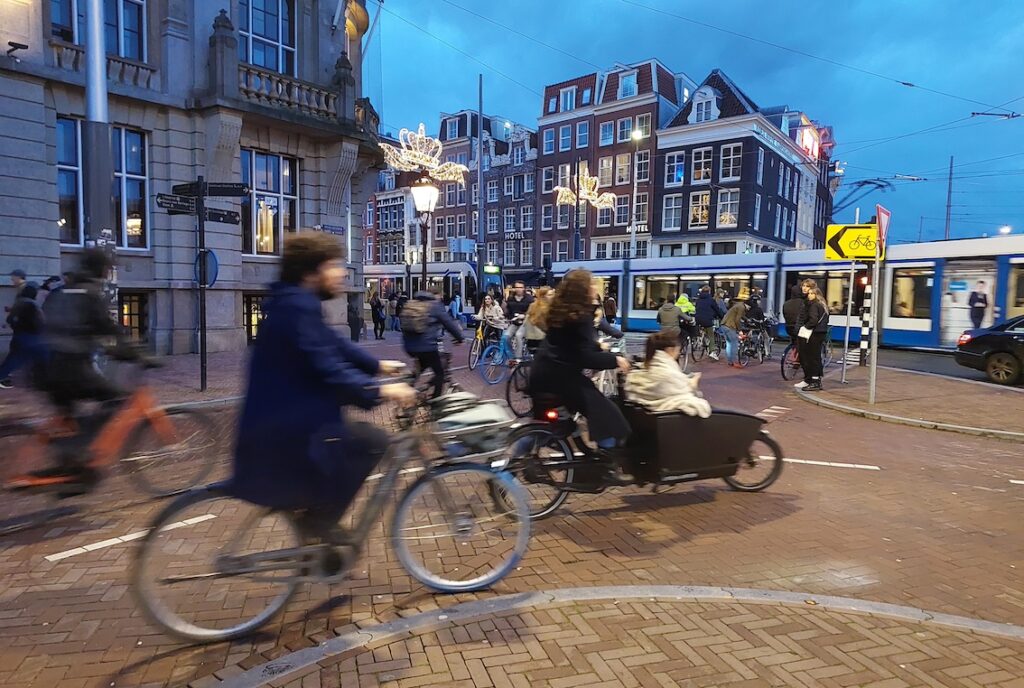Katie Panaretto |Twitter
Selected final essay, published 29 June 2020
Katie is a General Practitioner and Professor of Public Health at James Cook University. She is the current President of Bike Queensland and an avid cyclist.
Unraveling the Cycling City MOOC on Coursera
A city where cycling is the norm, an integral part of daily life, is the result of a complex interplay of history, culture, urban environments, use of space, street design and peoples’ behaviours. This course has really emphasised how complex the task will be of changing my own city’s relationship to the bicycle.
Australia, like the rest of the world, was taken by the ‘safety cycle’ in the late 1800s early 1900s. However, the car became embedded in our national culture through the 20th century consistent with Kuipers stating, “Mass media provide the symbols, stories, and rituals to bind them.” The car became something that liberated Australians from the tyranny of distance and got us all to the beach, which is a key icon in the Australian way of life.
“Influenced by American models, urban planners cast cars as modern and progressive; bicycles were anachronistic and unsafe.” –Oldenziel, Bruheze. We are still struggling with this in Australia – much of our community, our politicians and traffic departments don’t seem to see the overall impact of the car. Many agree our roads are unsafe for cycling. However, attitudes can change as evidenced by my home town of Brisbane’s share bike scheme that launched in October 2010. While it was initially criticised as a waste of money, it has become embedded in the fabric of the city, building from an initial 6000 rides per month to 67,000 rides per month in 2019. In spite of this development, challenging Aussie car culture remains difficult for our advocacy organisations due to our perceived right to a car and the road.
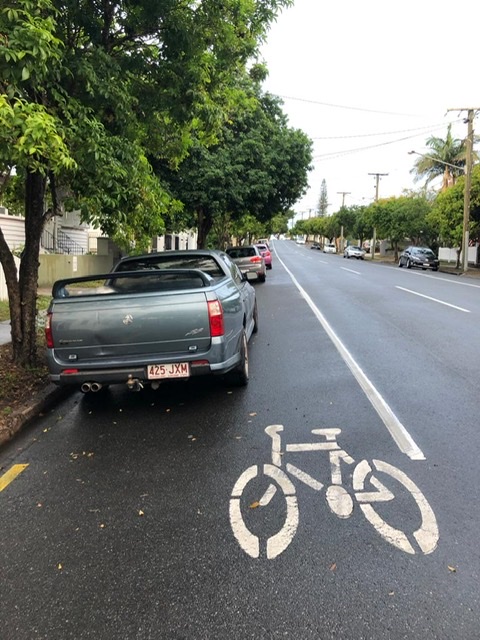
“There is, however, a fundamental dilemma when trying to make urban development less dependent on the car: the inability of most alternatives to match the quality of accessibility provided by private motorized transport.” – Bertolini. Echoing this philosophy, Australians have been happy to live in suburbs with houses and backyards, thus creating cities with big footprints in which we are largely car dependent. Our metropolitan landscape is that of urban sprawl. The discussion on density and access versus sustainability has arrived late to Australia.
Transit in terms of fast rail and bus networks has had little spending until recently, so our public transport infrastructure lags behind our population growth. In Brisbane in 2016 the modal share for commutes runs at about 75% by car, 15% by transit and 1% by bicycle, even though about 65% of commutes are 10 km or less. The car’s modal share is less than 40% in the very inner city, but rises very quickly as trips extend beyond 2km. The share cycle scheme in the inner city does not extend into the suburbs to facilitate end/start of trip cycling links with the bus or train networks. Action on accessibility, sustainability and transit nodes has just begun in Brisbane with the building of higher density developments around some rail stations and a new metro system.
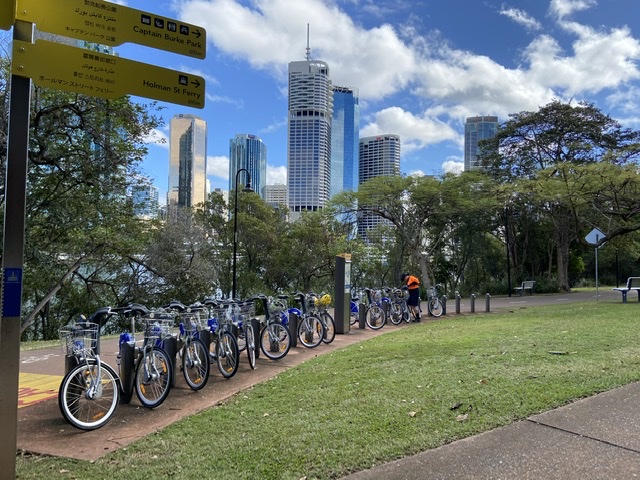
“The advantage of cycling, for example, lies precisely in its spatial efficiency, flexibility and ability to move large amounts of people in a reduced space; accordingly, it makes little sense to treat cyclists’ space requirements as similar to those of either cars or pedestrians…The spatial inefficiency of cars also means that congestion is almost inevitable.” – Nello-Deakin. Despite these arguments, our politicians continue to invest heavily in roads. We are now duplicating a freeway to the south of our city, as promised at our last election, in an effort to bust congestion. The monies spent on cycling infrastructure tend to be for expensive cycleway projects. We see little spent on redesigning roads as streets and reclaiming roads as public spaces.
“Complete streets seek to provide a safe and comfortable environment for all transport modes, including pedestrians and cyclists; in doing so, they typically entail a redistribution of road space which seeks to redress the power imbalance between motorized and non motorized transport modes.” – Nello-Deakin. The discussion on observing behaviours and our interactions with the environment make a lot of sense, but our political discourse remains constrained by discussions on travel times and congestion.
Our ability to innovate is variable. Brisbane did introduce shared electric scooters last year quite suddenly in the inner city. Despite criticism, a second scooter company has recently commenced operations. However, through the last decade there has been fairly low tolerance of non-conformist behaviour in Brisbane and Australia. Drivers don’t cope with erratic peds or cyclists. Pedestrians and cyclists largely give way to cars.
The thought of our road and council authorities removing traffic lights from troublesome intersections seems inconceivable to me. Little civil disobedience is tolerated, as evidenced by heavy criticism of recent school strikes in support of climate change prevention by our politicians. Interestingly, we have had very significant public health drives, including civil disobedience campaigns against the harms of tobacco (B.U.G.A. U.P. – Billboard Utilising Graffitists Against Unhealthy Promotions) and to save our rainforests in the 1980s. This energy, which successfully drove changes in policies, was largely lost but is now being reawakened in the face of climate change. However, cycling policy change is slow: we cannot lower car speeds, build grid-like cycle networks or reshape streets, despite much lobbying. As other cities across the world have made space for people to ride and walk during this COVID pandemic, Brisbane reduced parking fees in the city as its sole response to date. We will need to embrace more creativity and jettison our risk management frameworks, if we want to reclaim and reshape our cities.
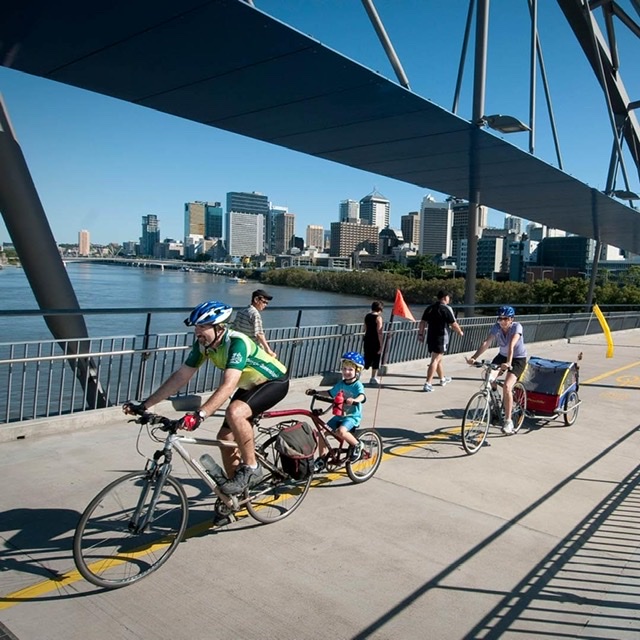
In health, the concept of a teachable moment relates to unplanned opportunities when people’s health status may alter providing motivation to change their behaviour. Climate change, our recent bushfires and the COVID pandemic could represent such an opportunity in Australia for the government to embrace cycling as a valid component in our transport system. A number of organisations have been pushing for change for some time with arguably little change to our city environs. How do we have a greater impact on policy and the pace of change? Maybe we need to use more data, such as a study akin to Bike Study week where all types of cyclists record their activity. Or, maybe it is all about money and we need to push the economic arguments. Some movement seems to be happening in Sydney and Melbourne. It would be nice to report in 12 months’ time that Brisbane has hitched onto this global change, taken significant steps to embrace the efficiency of cycling in our transport and city spaces, and moved to a quieter, less congested, and less polluted city.
Resources:
- Harms, L., Bertolini, L., & te Brommelstroet, M., Spatial and Social Variations in Cycling Patterns in a Mature Cycling Country Exploring Differences and Trends (Journal of Transport and Health, 1(4), 2014), pp. 232-242.
- Kuipers, Giseline, The Rise of National Habitus: Dutch Cycling Culture and the Shaping of National Similarity (European Journal of Social Theory 16 (1), 2013), pp.17-35.
- Nello-Deakin, S., Is There Such a Thing as a “Fair” Distribution of Road Space? (Journal of Urban Design, 2019).
- Oldenziel, R., & de la Bruheze, A.A., Contested Spaces: Bicycle Lanes in Urban Europe, 1900-1995 (Transfers, 1(2), 2011), pp.29-49.
Photos in this essay by Kathryn Panaretto except as noted.

